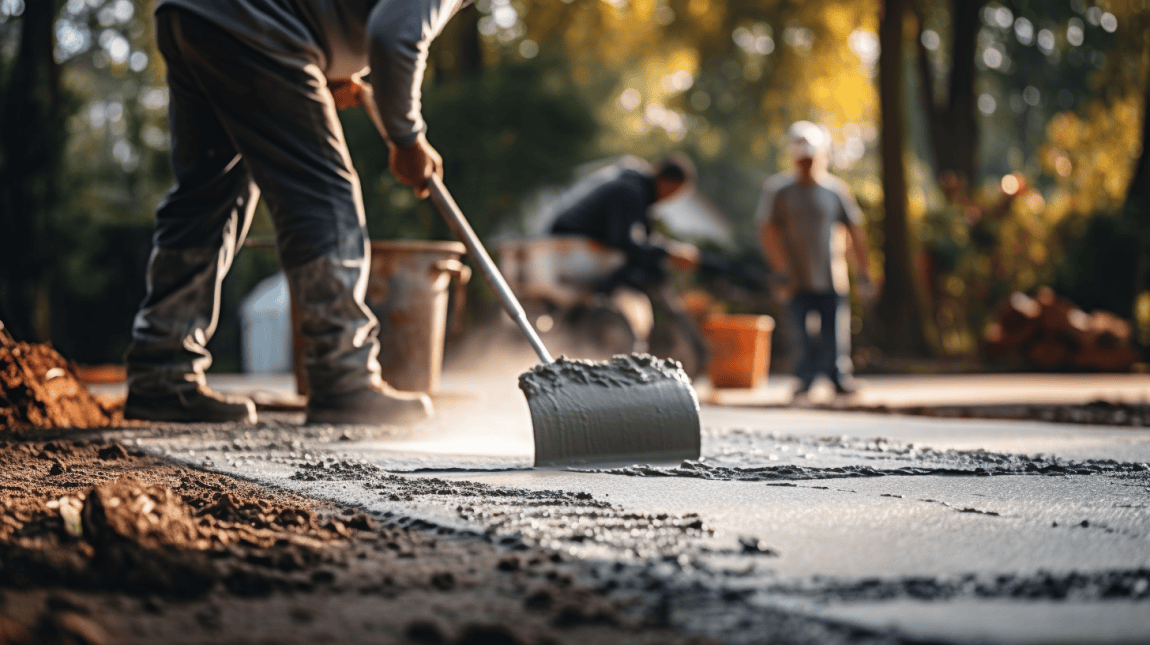In the realm of construction, understanding concrete pouring methods is vital. There is a trend on social media right now to show how easy it is to dry pour concrete projects instead of investing in machinery (or even rentals) that are designed to properly blend water with the concrete powder before pouring it in the forms. For some folks dry pouring works as an alternative to wet pouring ... but the reality is if you really care about how well your project with turn out and you aren't already an experienced mason or concrete finisher then you should probably leave it to the trained professionals.
This article delves into dry pouring, a technique often favored for its simplicity. Despite its appeal, dry pouring has significant drawbacks, such as inconsistent water-cement ratios and potential dry pockets. Limited decorative options and suitability issues also arise.
This analysis aims to illuminate the complexities of dry pouring, providing valuable insight for those seeking a sense of belonging in the construction community.
Understanding the Process of Dry Pouring Concrete
To grasp the implications of dry pouring in concrete projects, it is critical to first understand the unique process this method entails, which starkly contrasts traditional wet pouring by eliminating the step of pre-mixing the concrete with water.
While dry pouring can expedite the process, it has limitations in achieving proper curing and strength. Unlike wet pouring, it lacks control over the water-cement ratio, raising concerns about the overall quality and durability of the finished product.
Dry pouring may result in pockets of unmixed concrete compromising the structure's integrity. Despite its potential convenience, the disadvantages of dry pouring often outweigh the benefits, particularly for load-bearing projects.
Thus, understanding these nuances is crucial for those engaged in concrete construction projects.
Evaluating the Impact of Dry Pouring on Concrete Strength
Both the quantity and quality of water incorporated into the concrete mixture play crucial roles in the eventual strength and durability of the structure. Dry pouring often compromises these elements, leading to potentially weaker concrete.
- The importance of proper water cement ratio in dry pouring: Dry pouring makes it difficult to maintain an optimal water-cement ratio, which is vital for achieving the desired concrete consistency and strength.
- Inadequate saturation: Since the concrete mix isn't pre-mixed with water, there can be dry pockets, which compromise the overall quality and strength.
- Durability: Dry-poured concrete may not withstand frequent freeze-thaw cycles as well as wet-mixed concrete.
- Comparing the durability of dry poured and wet mixed concrete: Concrete experts lean towards wet-mix due to its proven strength and durability. Dry pouring is considered riskier for load-bearing structures.
Considering Dry Pouring for Small-scale Projects
Despite the risks associated with dry pouring, one might ponder over its applicability in the context of small-scale projects where the demands for strength and durability are significantly lower than in larger, more substantial constructions.
When considering the Pros and Cons of Dry Pouring for Small Scale Projects, it is essential to factor in the project's specific requirements, local climate, and desired aesthetic results.
Dry pouring might seem appealing due to its simplicity, but it also brings potential weaknesses such as inconsistent curing and reduced freeze-thaw resistance.
Thus, the Factors to Consider when Choosing Dry Pouring for Small Scale Projects extend beyond initial convenience and cost-effectiveness, delving into long-term durability and satisfaction with the final product.
Exploring Decorative Options With Dry-Poured Concrete
While dry-poured concrete may offer some convenience, it significantly limits the range of decorative options available, which can impact the aesthetic appeal of the final project. This limitation arises from the inability to mix colors, textures, or patterns into the concrete during the dry-pour process. As a result, the scope of creativity is curtailed.
Here are four significant decorative limitations:
- Inability to use integral coloration techniques.
- Limitations in texture imprinting and pattern designs.
- Challenges in achieving smooth finish.
- Difficulty in embedding decorative aggregates or objects.
On the contrary, the benefits of wet mix concrete for decorative projects are substantial. Different methods of coloring wet mix concrete, coupled with a variety of finish techniques, offer an extensive palette of creative possibilities.
Contemplating the Challenges of Dry Pouring as a DIY Project
In the realm of do-it-yourself projects, the adoption of dry pouring for concrete tasks presents a unique set of challenges to consider.
The limitations of dry pouring for load bearing projects are significant; they stem from the inability to control the water-cement ratio, which can lead to dry pockets compromising the overall strength and durability. This makes dry pouring unsuitable for load bearing projects such as driveways or sidewalks.
On the other hand, wet pouring for DIY projects allows for a consistent mix, directly affecting the durability and structural integrity of the final product. Opting for wet pouring over dry pouring enhances the quality of the concrete, making it more resistant to freeze-thaw cycles and suitable for load-bearing projects.
Conclusion: Sometimes It Really Is Best To Call A Pro!
In conclusion, dry pouring, while seemingly convenient, is fraught with challenges that may impact the durability and strength of concrete structures. The limitations in controlling the water-cement ratio, risk of dry pockets, and lack of decorative options indicate its unsuitability for weight-bearing and freeze-thaw susceptible projects. That's why it is important to call highly experienced concrete solutions installers to do it right!
Therefore, despite its potential for small-scale, DIY endeavors, a cautious approach is suggested, with consideration to traditional wet pouring or ready-mix methods as more reliable alternatives in concrete projects.
